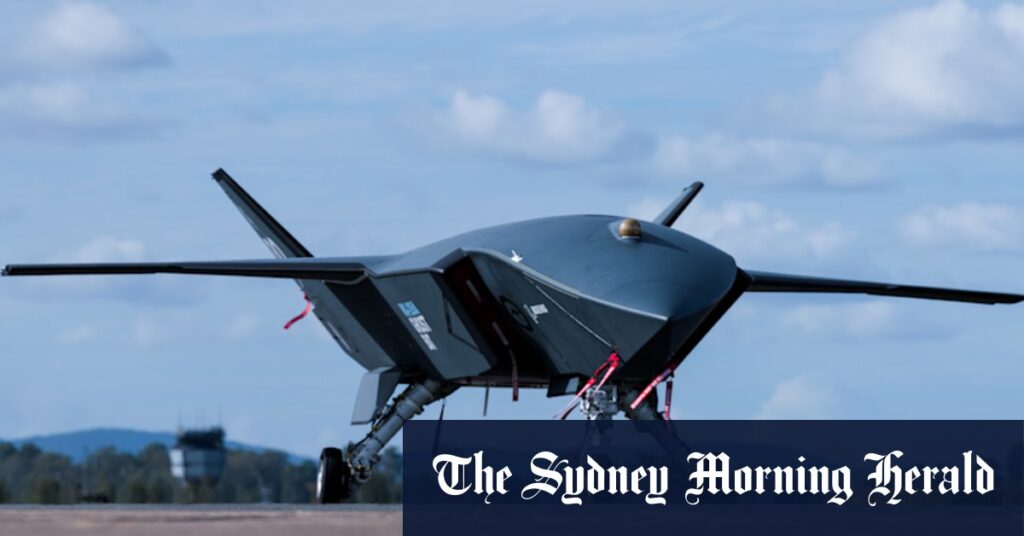“We’ve observed that when it comes to drones, the cycle of adaptation and counter-adaptation is around three to six months, so through Land 156, the ADF will continually upgrade and refresh capabilities to address emerging drone threats,” he said.
“This is a rolling effort, which means that the investment doesn’t stop, the technology development cycle doesn’t stop, and the Australian defence industry has the security of policy and the funding to keep developing this incredibly important technology.”
A Ghost Bat combat drone at RAAF Base Amberley in 2022.Credit: James Brickwood
Conroy said the ADF would also ramp up its offensive drone capabilities, with an immediate focus on the Boeing MQ-28 Ghost Bat – the first military aircraft to be designed, engineered and manufactured in Australia in more than half a century.
“Australia leads the world in this technology, which teams drones with crewed aircraft, allowing the drones to work together with each other and with the crewed aircraft as one team to achieve the mission,” he said.
“The technology is in the early stages of adoption by air forces around the world.
Loading
“Ghost Bat and other drones in the future that the Air Force is working on right now will function like a smartphone, to be upgraded often with new and advanced features.
“They have the potential to fundamentally change the way the Air Force operates, to make it an even more formidable deterrent.”
Conroy said the Ghost Bat would undergo air-to-air missile testing this year.
“We are working closely with Boeing Defence Australia to ensure we take advantage of any export opportunities, because we want to entrench and enhance the skill base we’ve already created here in Queensland in this ground-breaking technology,” he said.
“If we take it to the next stage, which is full production, it will be built right here in Queensland.”
Start the day with a summary of the day’s most important and interesting stories, analysis and insights. Sign up for our Morning Edition newsletter.
Read the full article here

